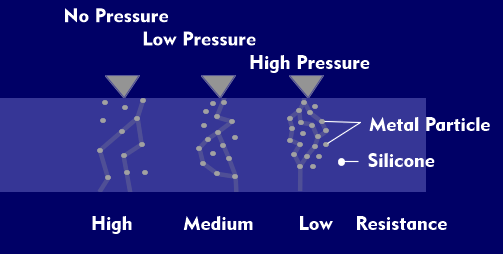quantum tunneling composite (QTC)
Touchscreens are rapidly gaining in importance. They are used in tablet PCs, desktops, PDAs, smartphones and also in e-book readers. As a result, there are various technological developments for touch and multi-touch screens.
Quantum Tunneling Composite (QTC) is one of these developments, which uses an electrically conductive composite material. This pressure-sensitive composite material is a so-called elastomer in which metal particles are embedded in silicone. Under mechanical pressure, the QTC material continuously changes its conductivity between an insulator and a good electrical conductor. The principle is reminiscent of the classic carbon microphone, in which the carbon particles changed their conductance under pressure.
In the QTC composite, metal particles were embedded in an elastomer and the ohmic resistance is in the tera-ohm range in the depressurized state. Other methods use carbon particles, which only result in a resistance change between a few kilo-ohms and a few hundred ohms, or about a power of ten. Because the QTC material responds to minute changes in pressure, it can be used in sensitive pressure sensors or like a switch, switching consumer currents instantaneously.
As for the tunneling that gave the process its name, this function refers to the tunneling of electrons from one metal particle across the insulation barrier of the silicone to the next metal particle.

